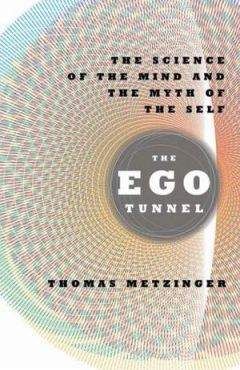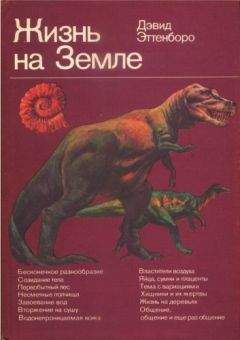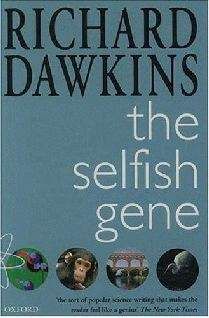Томас Метцингер - Туннель Эго

Скачивание начинается... Если скачивание не началось автоматически, пожалуйста нажмите на эту ссылку.
Жалоба
Напишите нам, и мы в срочном порядке примем меры.
Описание книги "Туннель Эго"
Описание и краткое содержание "Туннель Эго" читать бесплатно онлайн.
Томас Метцингер — Туннель Эго
Thomas Metzinger — The Ego Tunnel. The Science Of The Mind and The Myth Of The Self
Перевод с английского: Вячеслав Михайлов v.v.mykhailov@gmail.com
14. T. Lipps, «Einfuhlung, innere Nachahmung und Organempfindung,» Arch. der Psychologie 1:185–204 (1903).
15. See G. Rizzolatti & Laila Craighero, «The Mirror-Neuron System,» Ann. Rev. Neurosci. 27:169–192 (2004); the classical paper is Rizzolatti & M. A. Arbib, «Language Within Our Grasp,» Trends Neurosci. 21:188–194 (1998). For a brief first overview, see Rizzolatti & Destro, «Mirror Neurons,» Scholarpedia 3(1):2055 (2008).
16. See Rizzolatti & Destro, «Mirror Neurons»; www.scholarpedia.org/ artical/Mirror_neurons.
17. See Gallese, «The 'Shared Manifold' Hypothesis» (2001), for an additional discussion, see pp. 174 of this book.
18. Jerome S. Bruner, Acts of Meaning (Cambridge, MA: Harvard University Press, 1990), 40.
CHAPTER 7
1. http://technology.newscientist.com/article.ns?id=mgfflfflfflfflfflfflfflffl.Hffl& print=true.
2. A. Cleeremans, «Computational Correlates of Consciousness,» Prog. Brain Res. ИШШШ-ИЗ (ИШН). See also his «Consciousness: The Radical Plasticity Thesis,» Prog. Brain Res. ИШЛШ-ИЗ
3. J. Bongard et al., «Resilient Machines Through Continuous SelfModeling,» Science
4. Ibid. In particular, see also free online support material at www.sciencemag.org/cgi/content/full/…(See www.ccslmae.cornell.edu/ research/selfmodels/morepictures.htm for additional online material.)
5. See also Thomas Metzinger, «Empirical Perspectives from the SelfModel Theory of Subjectivity: A Brief Summary with Examples,» in Rahul Banerjee & Bikas K. Chakrabarti, eds., Progress in Brain Research (Amsterdam: Elsevier)
6. Karl Popper & J. C. Eccles, The Self and Its Brain: An Argument for Interactionism (New York: Routledge, ШИШИ), Alan M. Turing's paper is in Mind
7. It is interesting to note how perhaps the foremost theoretical «blind spot» of current philosophy of mind is conscious suffering. Thousands of pages have been written about color qualia and zombies, but almost no theoretical work is devoted to ubiquitous phenomenal states such as physical pain, boredom, or the everyday sadness known as subclinical depression. The same is true of panic, despair, shame, the conscious experience of mortality, and the phenomenology of losing one's dignity. Why are these forms of conscious content generally ignored by the best of today's philosophers of mind? Is it simple careerism («Nobody wants to read too much about suffering, no matter how insightful and important the arguments are»), or are there deeper, evolutionary reasons for this cognitive scotoma? When one examines the ongoing phenomenology of biological systems on our planet, the varieties of conscious suffering are at least as dominant as, say, the phenomenology of color vision or the capacity for conscious thought. The ability to consciously see color appeared only very recently, and the ability to consciously think abstract thoughts of a complex and ordered form arose only with the advent of human beings. Pain, panic, jealousy, despair, and the fear of dying, however, appeared millions of years earlier and in a much greater number of species.
CHAPTER 8
1. Our belief in invisible persons may have different roots, possibly including so-called hyperactive agent-detection devices (see D. Barrett, «Exploring the Natural Foundations of Religion,» Trends Cog. Sci. 4:29–34, 2000) and ancestor cults: See Daniel C. Dennett, Breaking the Spell: Religion as a Natural Phenomenon (New York: Viking, 2006), esp. 109ff; and Thomas Metzinger, Being No One: The Self-Model Theory of Subjectivity (Cambridge, MA: MIT Press, 2003), 371ff. Also note that out-of-body experiences would almost inevitably have contributed to early humankind's firm belief in the existence of invisible persons and more subtle levels of reality. See T. Metzinger, «Out-of-Body Experiences as the Origin of the Concept of a 'Soul,'» Mind and Matter 3(1):57–84 (2005).
CHAPTER 9
1. Y. Kamitami & S. Shimojo, «Manifestation of Scotomas Created by Transcranial Magnetic Stimulation of Human Visual Cortex,» Nature Neuroscience 2:767–771 (1999).
2. B.-P. Bejjani et al., «Transient Acute Depression Induced by HighFrequency Deep-Brain Stimulation,» N.E. Jour. Med. 340:1476-80 (1999). Here are examples of how the patient described her own conscious experience: «I'm falling down in my head, I no longer wish to live, to see anything, hear anything, feel anything.» The authors report that when she was asked why she was crying and if she felt pain, she responded: «No, I'm fed up with life, I've had enough. I don't want to live anymore, I'm disgusted with life. Everything is useless, always feeling worthless, I'm scared in this world.»
When asked why she was sad, she replied: «I'm tired. I want to hide in a corner. I'm crying over myself, of course. I'm hopeless, why am I bothering you.» Note that deep brain stimulation can also have just the opposite effect, namely, relief from serious, treatment-resistant depression. Here is a description: «All patients spontaneously reported acute effects including 'sudden calmness or lightness,' 'disappearance of the void,' 'sense of heightened awareness,' 'connectedness,' and sudden brightening of the room, including a sharpening of visual details and intensification of colors in response to stimulation.» See H. Mayberg, «Clinical Study: Deep Brain Stimulation for Treatment-Resistant Depression,» Neuron 45:651–660 (2005).
3. C. M. Cook & M. A. Persinger, «Experimental Induction of the 'Sensed Presence' in Normal Subjects and an Exceptional Subject,» Percept. Mot. Skills 85:683–693 (1997). For a critical assessment and self-experiential report, see John Horgan, Rational Mysticism: Dispatches from the Border Between Science and Spirituality (New York: Houghton Mifflin, 2003).
4. See M. A. Persinger, «Religious and Mystical Experiences as Artifacts of Temporal Lobe Function: A General Hypothesis,» Perc. Mot. Skills 57:1255-62 (1983). Clinicians have long observed a deepening of emotionality plus the development of a serious, highly ethical and spiritual demeanor in certain patients with chronic mesial temporal lobe epilepsy. Whether this can count as evidence for a specific kind of «personality syndrome» is still disputed. See O. Devinsky & S. Najjar, «Evidence Against the Existence of a Temporal Lobe Epilepsy Personality Syndrome,» Neurology 53:S13-S25 (1999); D. Blume, «Evidence Supporting the Temporal Lobe Epilepsy Personality Syndrome,» Neurology 53:S9-S12 (1999).
5. For more information, see the Web portal my collaborators Carsten Griesel and Elisabeth Hildt have created at www.neuroethics.uni-mainz.de.
6. B. Maher, «Poll Results: Look Who's Doping,» Nature 452:674–675 (2008). See also B. Sakhanian & S. Morein-Zamir, «Professor's Little Helper,» Nature 450:1157-5 (2007).
7. M. J. Farah et al., «Neurocognitive Enhancement: What Can We Do and What Should We Do?» Nature Reviews Neuroscience 5:421–425 (2004). Four years later, after a careful analysis of pros and cons and perhaps surprisingly to many, leading figures in neuroethics are now coming to the conclusion that «We should welcome new methods of improving our brain function. In a world in which human workspans and lifespans are increasing, cognitive enhancement tools-including the pharmacological-will be increasingly useful for improved quality of life and extended work productivity, as well as to stave off normal and pathological accerelated cognitive declines. Safe and effective cognitive enhancers will benefit both the individual and society.» See H. Greely et al., «Towards Responsible Use of Cognitive-Enhancing Drugs by the Healthy,» Nature 456:702–705 (2008).
8. For a first and careful discussion of this important question, see T. Douglas, «Moral Enhancement,» J. Appl. Phil. 25:228–245 (2008).
9. Alexander Shulgin and Ann Shulgin, PiHKAL: A Chemical Love Story (Transform Press, 1991); and Alexander Shulgin, TiHKAL: The Continuation (Transform Press, 1997).
10. W. N. Pahnke & W. A. Richards, «Implications of LSD and Experimental Mysticism,» Jour. Religion & Health 5:179 (1966).
11. R. R. Griffiths et al., «Psilocybin Can Occasion Mystical-Type Experiences Having Substantial and Sustained Personal Meaning and Spiritual Significance,» Psychopharm. 187:268–283 (2006).
12. R. R. Griffiths et al., «Mystical-Type Experiences Occasioned by Psilocybin Mediate the Attribution of Personal Meaning and Spiritual Significance 14 Months Later,» Jour. Psychopharm. 22:621–632 (2008).
13. N. Malleson, «Acute Adverse Reactions to LSD in Clinical and Experimental Use in the United Kingdom,» Br. Jour. Psychiatry 118:229–230 (1971).
14. S. Cohen, «Lysergic Acid Diethylamide: Side Effects and Complications,» Jour. Nerv. Ment. Dis. 130:30–40 (1960).
15. See R. J. Strassman, «Adverse Reactions to Psychedelic Drugs: A Review of the Literature,» Jour. Nerv. Men. Dis. 172:577–595 (1984); J. H. Halpern & H. G. Pope, «Do Hallucinogens Cause Residual Neuropsychological Toxicity?» Drug Alcohol Depend. 53:247–256 (1999); M. W. Johnson et al., «Human Hallucinogen Research: Guidelines for Safety,» Jour. Psychopharm. 22:603–620 (2008). In the most recent and comprehensive review of the scientific literature, the authors actually make the interesting (and perhaps bold) claim that «The incidence of psychotic reactions, suicide attempts, and suicides during treatment with LSD […] appears comparable to the rate of complications during conventional psychotherapy.» See Torsten Passie et al., «The Pharmacology of Lysergic Acid Diethylamide: A Review,» CNS Neuroscience & Therapeutics 14:295–314 (2008).
16. B. Vastag, «Poised to Challenge Need for Sleep, 'Wakefulness Enhancer' Rouses Concerns,» Jour. Amer. Medic. Assoc. 291(2):167 (2004).
17. See Judy Illes, Neuroethics: Defining the Issues in Theory, Practice, and Policy (New York: Oxford University Press, 2005); and P. R. Wolpe et al., «Emerging Neurotechnologies for Lie-Detection: Promises and Perils,» Amer. Jour. Bioethics 5(2):39–49 (2005); or T. Metzinger, «Exposing Lies,» Scientific American MIND, October/November:32–37 (2006).
18. Haim Harari, «Democracy May Be on Its Way Out» (2006), www.edge.org/q2006/q06_2.htmlfflharari.
Подписывайтесь на наши страницы в социальных сетях.
Будьте в курсе последних книжных новинок, комментируйте, обсуждайте. Мы ждём Вас!
Похожие книги на "Туннель Эго"
Книги похожие на "Туннель Эго" читать онлайн или скачать бесплатно полные версии.
Мы рекомендуем Вам зарегистрироваться либо войти на сайт под своим именем.
Отзывы о "Томас Метцингер - Туннель Эго"
Отзывы читателей о книге "Туннель Эго", комментарии и мнения людей о произведении.









